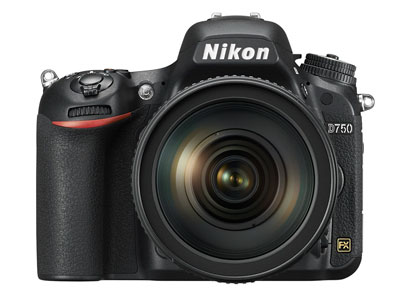Still too early to write off the DSLR world, isn’t it, especially the DSLR full-frame or FX world or whatever you want to call the digital equivalent to film’s 35mm standard. Who would have thought a few years ago, when smaller mirrorless Micro Four Thirds and APS-C formats were making serious inroads, who would have thought that the larger, clumsier DSLR was about to be reinterpreted. Today, the DSLR is back in full force, mainly thanks to photographers with lots of legacy glass and emerging markets where the classic camera body with pentaprism still stands for seriousness and quality — and no less thanks to the price decline of large sensors. Not too long ago full-frame cost you two arms and two legs. In August 2005 Canon announced the first “affordable” full-framer, the 5D. The real breakthrough came with the 5D Mark II (eBay) announced in August 2008, one month after Nikon’s D700. That was the beginning of the full-frame revolution.
The mirror box is dead, long live the mirror box. By now it’s easy to lose count of all the new full-frame cameras flooding the market, including the mirrorless siblings provided by Sony’s A7/A7R/A7S (Amazon) series. Nikon just announced the D750 (Amazon / B&H Photo / Adorama), something in-between the D6XX and D8XX series. Differences aren’t negligible, but each and one of these cameras is perfectly capable of producing stunning results.

Next player to follow? Maybe Pentax, maybe Fujifilm, maybe Olympus. I personally doubt it, maintaining two imaging system standards is an excessively bold move these days — for Pentax it would even the third system next to its APC-C and the minuscule Q system.
Furthermore there’s Leica with its digital M standard — out of reach for most mortals, yet an object of pure desire that was on the forefront of making the digital full-frame standard become so popular. Marketed as the “perfect understatement,” any Leica camera is in fact a perfect overstatement of technological prowess, but that’s not what this post is about.
These few thoughts are about the astonishing rise of what we commonly call, rightfully or not, full-frame. Right, some people might still think the earth is flat. Doesn’t mean full-frame is any better than the rest. Just ask yourself what you need a camera (system) for. Right, you think all these buyers of full-frame DSLRs and MILCs are fooled by marketing and propaganda…
Canon and Nikon might milk the DSLR cow until it’s dead. Why blame them. They’re not selling old technology. They’re selling a revitalized classic. The more things change, the more they stay the same.


